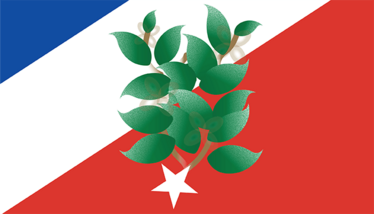Barking up the Right Tree
How genome mining and bioengineering techniques are paving the way for more sustainable vaccine adjuvants (that don’t grow on trees)
Jamie Irvine | | 2 min read | News

Ever since the COVID-19 pandemic, vaccines have become a particularly hot topic, with countless researchers across the world working on new solutions for vaccine development, distribution, and manufacturing. Every now and then, sustainability surfaces as the lead driver, including a recent study published in Science.
The Chilean native Quillaja saponaria, otherwise known as the soap bark tree, is renowned (at least in medicine making circles) for producing potent immunological adjuvants called QS saponins (1) – ingredients that can boost potency, effectiveness, and immune response of vaccines.
But trees are precious. And so researchers from the Osbourn group at the John Innes Centre in Norfolk, UK, have used genome mining and bioengineering techniques to create saponin-based vaccine adjuvants without harvesting material directly from trees (2). And that’s no mean feat. As James Reed, first author of the study, says, “These are complex molecules that have thwarted attempts to synthesize them at scale using chemistry in the lab. After many twists and turns, we have now discovered the core set of genes responsible for the biosynthesis of QS saponins.”
By sequencing the genome of Quillaja saponaria and then using computational tools to predict which genes were responsible for saponin biosynthesis, the researchers identified a biosynthetic pathway of 16 genes that produce enzymes for saponin production. The pathway to these molecules was then restructured in a relative of the tobacco plant, Nicotiana benthamiana.
Beyond the direct success of the current research, the team believe its work could help support future vaccine development efforts. Anne Osbourn, study lead, said in a statement (3), “By assembling the genome sequence of Quillaja saponaria, we now have the instruction manual which has enabled us to decode how the tree makes these potent medicinal molecules. This opens the possibility of producing known and new-to-nature saponin-based vaccine adjuvants optimized for immunostimulant activity and suitable for human applications in our rapid transient plant expression system.”
- Govind Ragupathi et al., “Natural and synthetic saponin adjuvant QS-21 for vaccines against cancer,” Expert Rev Vaccines, 10, 463-470 (2011). DOI: 10.1586/erv.11.18
- James Reed et al., “Elucidation of the pathway for biosynthesis of saponin adjuvants from the soapbark tree”, Science, 379, 1252 (2023). DOI: 10.1126/science.adf3727
- John Innes Centre, “Can insights from the soapbark tree change the way we make vaccines?” (2023). Available at: http://bit.ly/3MmSQ7H
Associate Editor, The Medicine Maker



















